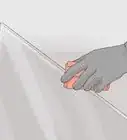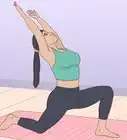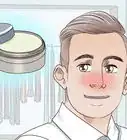This article was co-authored by Martin Nepton. Martin Nepton is a Professional Hair Stylist and Colorist at Bang Bang LA in Los Angeles, California. With over 11 years of experience, Martin specializes in helping clients express their Queer identity through hair. Martin offers personalized haircuts and color and style services with non-gender prices based on hair length. Martin holds a BA from the University of Québec at Montréal and is a Licensed Hair Stylist in California.
There are 11 references cited in this article, which can be found at the bottom of the page.
wikiHow marks an article as reader-approved once it receives enough positive feedback. This article received 14 testimonials and 100% of readers who voted found it helpful, earning it our reader-approved status.
This article has been viewed 1,980,967 times.
A trip to the beauty salon for a haircut is fine for a special occasion, but it can get expensive to go every 6 weeks. Luckily, you can save some money by trimming your own hair at home! You might be a little nervous the first couple of times, but after you get the hang of it, you'll be glad you learned it! This wikiHow will give you instructions on how to cut long hair, short hair and even how to cut your bangs.
Steps
Cutting Long Hair
-
1Buy a sharp pair of scissors. The first step in cutting your hair at home is to invest in the right tools. You will need a sharp pair of hair cutting scissors (not just any old scissors you have lying around at home) and a fine-toothed comb.[1]
- Hair cutting scissors are easily available at beauty supply stores - you can find them pretty cheaply, somewhere in the $25 to $50 range. If you don't want to buy a hair cutting scissors, a fabric scissors will do - just make sure it's really sharp.
- Using dull scissors is a bad idea as you will find it harder to cut your hair and may end up giving yourself split ends - which defeats the purpose of giving yourself a haircut in the first place![2]
-
2Wash your hair, but don't dry it. Wet hair is much easier to cut than dry hair, so make sure to shampoo and condition your hair before you start snipping.[3]
- Fully comb out your hair once you get out of the shower - your hair needs be as sleek and tangle free as possible.Use a leave-in conditioner if your hair tends to be frizzy or fly-away.
- If your hair is quite long or thick, there's a good chance that sections of your hair might start to dry before you get around to cutting them. To tackle this, fill a spray bottle with water and a little conditioner. Then you can dampen your hair whenever you need to!
Advertisement -
3Clip up the top portions of your hair. Depending on how thick your hair is, expect to work in several sections as you cut, starting with the bottom-most layer and working up.[4]
- Use elastic hair ties or crocodile clips to divide hair into sections. Just make sure the sectioned hair isn't left to hang loose - otherwise it could get in the way of your scissors.
- Once you've finished with the bottom layer of hair, you can start releasing the other sections as you go.
-
4Find split ends. If you just want to give your hair a small trim to get rid of your damaged ends, you will first need to inspect your hair to find out how much hair will need to be cut.[5]
- Take a look at the ends of your hair. If they seem scraggly or unruly, or you can see the split hairs, they're probably damaged and need to be cut.
- Expect to trim about 0.25 inch (6 mm) above where the damage stops. This will keep your hair in good condition.
-
5Measure where you wish to cut. For an accurate cut, grab a section of hair between the index and middle fingers of your non-dominant hand.
- Drag your fingers down your hair, until you reach a point slightly above where you want to cut your hair. Make sure the hair isn't knotted or twisted between your fingers - it must lie perfectly flat.
- Your hair will look shorter when it's dry, so be conservative when you're measuring how much to cut. This is particularly important for people with curly hair.
- Remember - you can always go back and cut it shorter afterwards, but you can't undo it if you cut too much off on the first go.
-
6Trim the ends. When you're ready to start cutting, hold the scissors just below your fingers, in a parallel fashion. Try to keep a reasonable tension on the hair between your fingers.
- Trim slowly, letting the cut hair fall away as your fingers (and the strand they're holding) remain stable and in the same position.
- If you want a blunt end to your hair, just cut straight across and leave it at that. But if you want a softer finish, hold the scissors vertically (perpendicular to your fingers) and cut directly into the hair, until no sharp angles remain. This will give the ends of your hair a more feathery look.[6]
-
7Make sure your ends match up. After you've finished trimming one layer of your hair, make sure the ends match up. Grab a section on each side of your face with your hands, using your thumbs and forefingers.
- Pull your fingers down the hair at exactly the same pace. Whichever hand runs out of hair first was holding a shorter strand.
- Trim accordingly to match up. Re-check the length until you're satisfied, then move on to the next layer of hair.
-
8Trim your layers (optional). Working with layers, especially if you have very thick or curly hair, is best left to the professionals. However, If you absolutely need a quick trim on the layers framing your face, use the following technique:[7]
- Grab as much of the ends of each layer of hair between your fingers as possible, then trim as little hair as possible, holding the scissors at a slightly downward angle.
- In other words, trim your hair following the angle from your jaw on that side of your face to the shoulder on the same side.
- Use the softening technique described above to even out the ends of the hair, then match the layers on each side of your face to make sure they're the same length.
-
9Double-check your hair when it's dry. After your hair has dried (in the way that you usually do it, whether that's air-drying or blow drying), check your cut for any glaring inconsistencies.
- Use a handheld mirror to check the hair at the back of your head or, better yet, ask a trusted friend to check it for you.
- If you find any unevenness, take your scissors one more time and, very carefully, attempt to even it out, cutting as little hair as possible.
Cutting Short Hair
-
1Gather materials. Most extra-short haircuts are achieved with an electric razor and a pair of scissors. Make sure you have the guard you want for the razor (which will determine how much of your hair it cuts off) and sharp scissors.
-
2Start with wet hair. You can wash it, or simply dampen it with a spray bottle before you start. Wet hair is easier to cut, and makes cleanup a breeze.[8]
-
3Start with the top of your head. For a traditional men's cut, the hair on the top of your head should be slightly longer than it is on the sides and back.
- Start an inch or two (2.5-5 cm) above your ear, and follow that line around the back of your head to the other ear, moving the razor in a straight-up motion as you cut.
- Then, starting at your forehead, trim the top of your hair by moving the razor back over the natural curve of your head.
- Catch any spots you missed between these two areas.
-
4Cut the back and sides. Put the shorter guard on your razor. Start with your sideburns, moving the razor in an upwards motion. Cut just as far as the point where you started using the longer guard.
- On the back of your head, start the razor at your neck and move upward, again stopping where you cut with the longer guard.
- Don't worry about the difference in length for now - that's where the scissors come in.
- It's best to ask a friend to help you trim the back of your hair. While they're trimming, be sure to tilt your head down and look at the floor—this helps the cut look cleaner.
-
5Use scissors to blend the two hair lengths. Using the index and middle fingers of your non-dominant hand, grab a section of longer hair that's just above where you switched guards.[9]
- With the scissors, carefully trim the hair until the two different lengths blend into each other.
- Do this all the way around your head until the two sections look well-blended and the there is no obvious difference between the two lengths.
- Have a friend double-check the back of your head, or use a hand mirror in front of a larger mirror to check it yourself.
- If the "long" part of your hair on top is shorter than finger-width, then skip using your index and middle fingers to pull out sections.
Trimming Bangs (Fringe)
-
1Get a sharp pair of scissors. You can buy scissors meant for hair cutting at a beauty supply store. Don't just use paper or nail scissors - they're too dull for your hair and will make awkward cuts.
-
2Decide how short you're going to trim. Make a conservative estimate of where you want your bangs to fall. Remember, you can always trim more, but growing back the hair that you didn't mean to cut takes a lot longer.
-
3Pull back the rest of your hair. Secure non-fringe hair so that it's away from your face and out of the danger zone. If necessary, use a comb to part your bangs away from the rest of your hair.[10]
-
4Wet your bangs. Splash a bit of water on the hair, or use a spray bottle. They'll cut more easily wet, and you can do a touch-up once they dry.[11]
-
5Measure where you want to cut. Grab a section of hair between the index and middle fingers of your non-dominant hand. Drag your fingers down so that they're resting just above where you want to make a cut.
-
6Trim the hair beneath your fingers. Put your scissors close to your fingers (so that they're almost parallel) and cut slowly. Your fingers (and the hair they're holding) should remain stable as the trimmed hair falls away.[12]
-
7Make sure your sides match up. If you want your bangs to be the same length all the way across, make sure they match up.
- On each side, grab a strand between the thumb and forefinger of each hand. Pull your fingers down slowly and at the same pace.
- If one hand runs out of hair before the other, you need to trim a bit to match up the sides.
- Do this until you're satisfied that the lengths are even.
-
8Cut side swept bangs (optional). If you want your bangs to sweep to the side, comb them in the direction that you want them to go.
- Tip your head forward slightly, so that your bangs fall away from your face. Put your scissors in the direction you want your bangs to run.
- Starting near the part, position the scissors where you want the shortest part of your bangs. For side swept bangs, they'll get a bit longer as you go on. Because of this, angle your scissors slightly downward.
- Make short, small cuts across your bangs. The lengths should be a bit choppy, but not overly so. Aim to cut sections that are about 0.5 inch (12 mm) wide.
- When your bangs dry, touch them up. Ruffle the hair a bit, and see if you're happy with where it falls. Make more trims if necessary.
Community Q&A
-
QuestionHow do I hold and cut long hair from the front?
 Community AnswerTake small sections at a time and chop off as much as you want. Then, slowly cut the other hairs section by section to get a perfect cut.
Community AnswerTake small sections at a time and chop off as much as you want. Then, slowly cut the other hairs section by section to get a perfect cut. -
QuestionI'm growing out a pixie hairstyle. How do I shape it to be a short bob?
 Community AnswerTrim the back as it grows. Let the bangs catch up to the back. Should look like short bob in 3 - 4 months.
Community AnswerTrim the back as it grows. Let the bangs catch up to the back. Should look like short bob in 3 - 4 months. -
QuestionI want to get my haircut, but I'm scared. What can I do?
 Community AnswerDon't be scared. Bring a picture of what you want to the hair salon. Ask a friend to come with you if you think that might help. Remember that haircuts are always temporary, even if you're not thrilled with it, it will grow out pretty quickly.
Community AnswerDon't be scared. Bring a picture of what you want to the hair salon. Ask a friend to come with you if you think that might help. Remember that haircuts are always temporary, even if you're not thrilled with it, it will grow out pretty quickly.
Warnings
- Never cut large chunks of your hair. Take small sections.⧼thumbs_response⧽
- If you are dissatisfied with a professional hair cut, going to another salon to have it fixed by another professional will yield better results than trying to fix it yourself.⧼thumbs_response⧽
- Do not attempt a new hair style by yourself. Unless you are an experienced stylist, just stick to trimming the style you already have.⧼thumbs_response⧽
- Be careful with the scissors.⧼thumbs_response⧽
- Very curly hair is difficult to cut, and as a general rule should never be cut at home. If you absolutely want to cut curly hair, straighten it first and then cut it.⧼thumbs_response⧽
Things You'll Need
- Electric razor (optional)
- Hair-cutting scissors
- Comb
- Mirror
- Water
- Hair clips or elastics (optional)
References
- ↑ https://www.marieclaire.co.uk/beauty/hair/how-to-cut-your-own-hair-5684
- ↑ http://hair.allwomenstalk.com/tips-for-cutting-your-own-hair/4/
- ↑ https://www.womenshealthmag.com/beauty/a19968418/wet-or-dry-haircut/
- ↑ https://www.parents.com/kids/hygiene/how-to-cut-your-kids-hair/
- ↑ https://www.girllovesglam.com/cut-split-ends/
- ↑ http://www.bellasugar.com/How-Cut-Your-Own-Hair-9838912
- ↑ https://www.manrepeller.com/2016/08/how-to-cut-your-own-hair.html
- ↑ https://www.mensjournal.com/health-fitness/how-to-give-yourself-a-haircut-20131203/
- ↑ https://haircutinspiration.com/how-to-cut-boys-haircut-layering-blending/
About This Article
Before you cut your own hair, wash it and comb it out. Use elastic hair ties or crocodile clips to divide your hair into sections, and clip it up so you can work from the bottom-most layer first. Then, grab one of the bottom sections between your index and middle finger and hold it just above where you want to cut. Next, use your other hand to hold the scissors parallel just below there and slowly trim the ends. Continue section by section, checking that the hair on both sides of your face is even, until you're done! If you want to learn how to cut and style short hair or bangs, keep reading the article!
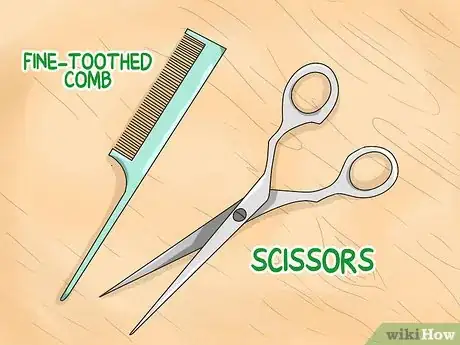


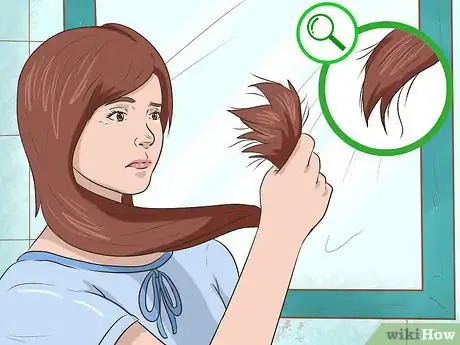
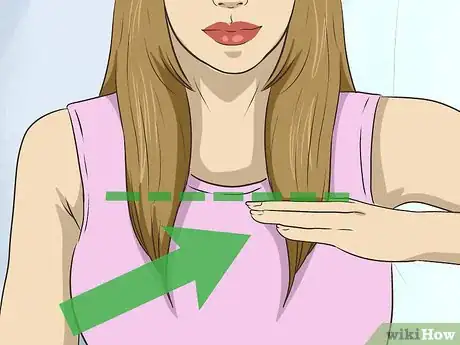
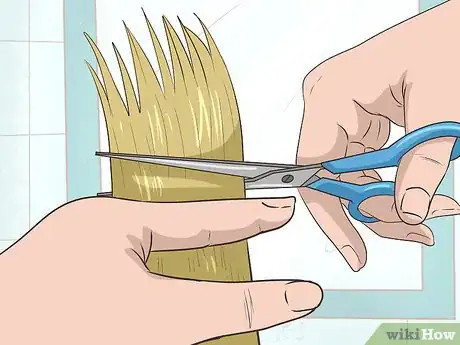
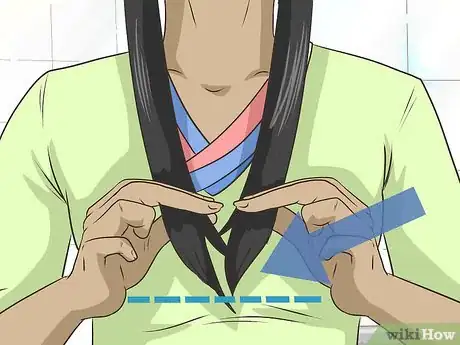
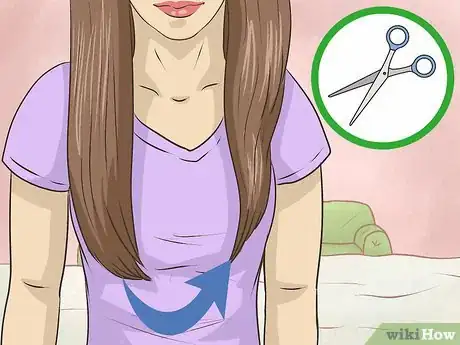


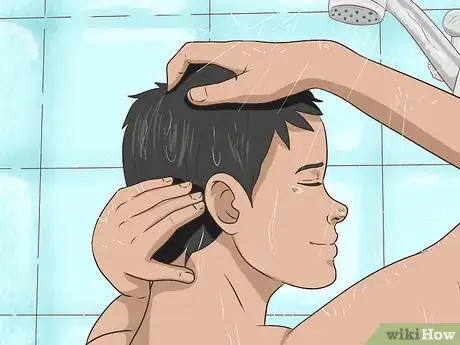
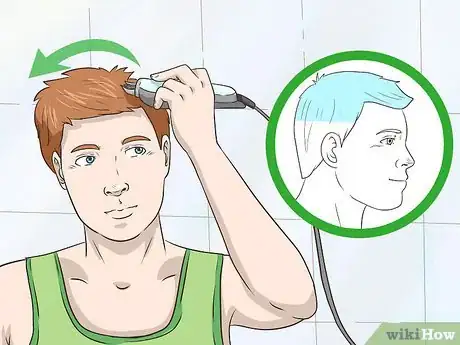
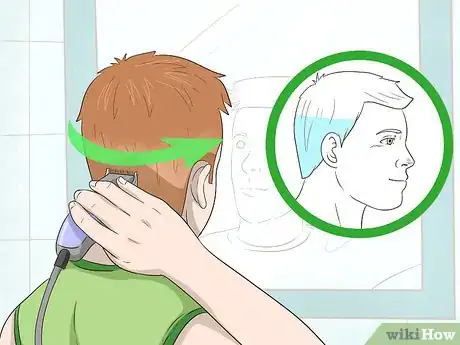
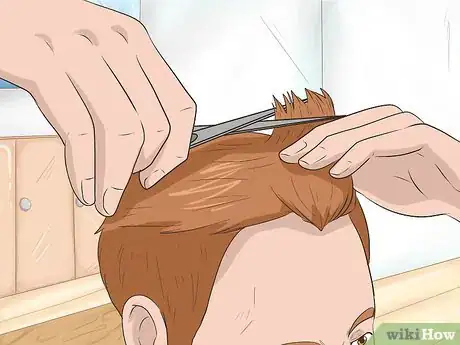
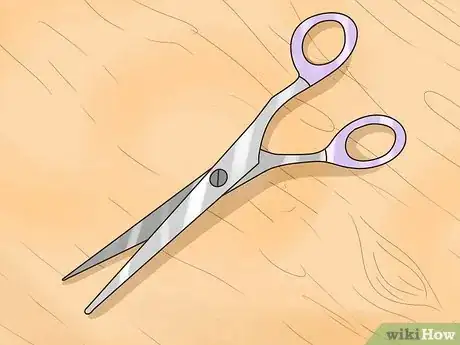
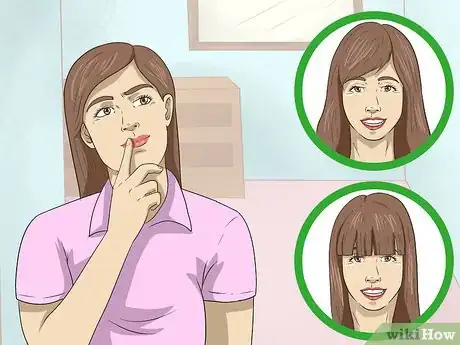
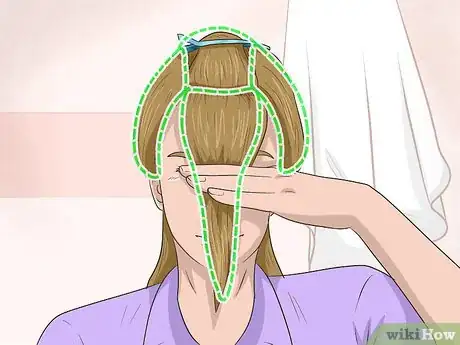
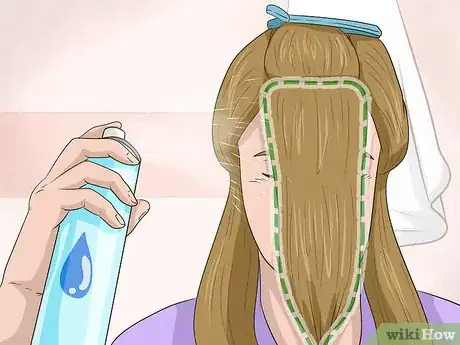
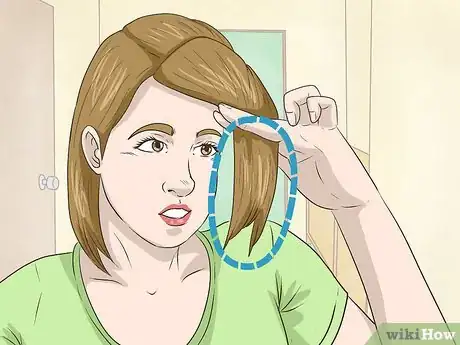
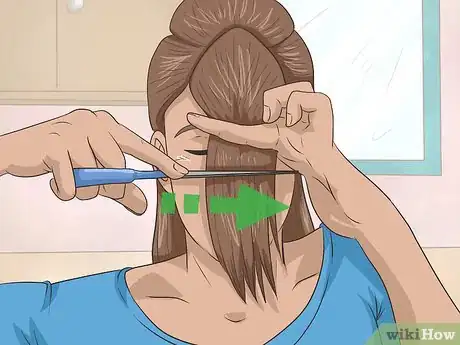
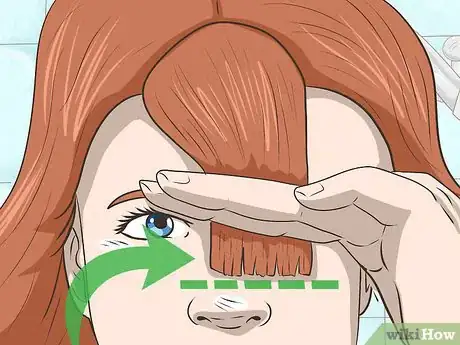
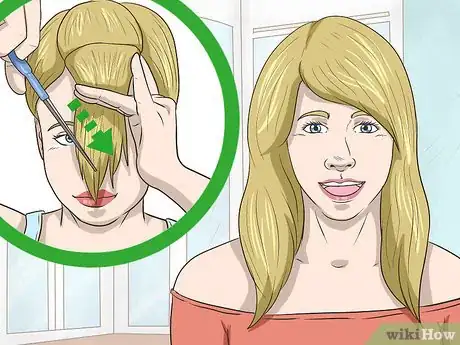
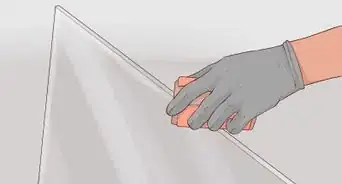
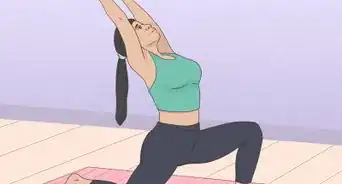
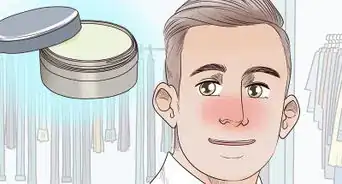

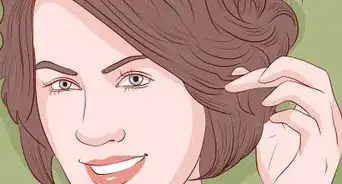
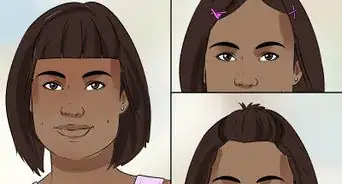
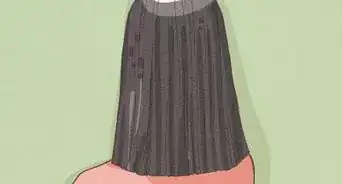
-Step-18-Version-2.webp)










